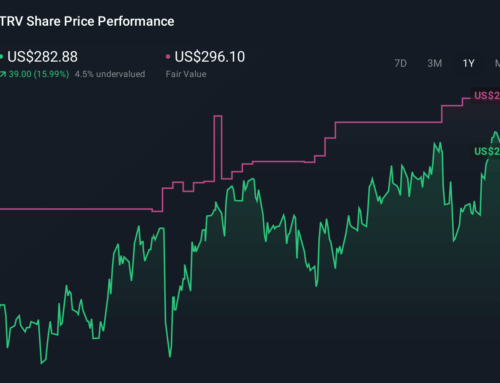Cannabis Could Be Bad for Your Heart
May 5, 2025
The country’s marijuana use has been rising, especially in the 24 states that allow recreational use and in the 39 states that permit medical use of cannabis products. Twenty-two percent of people aged 12 or older say they used marijuana in 2022. Approximately 17.7 million people reported being daily or near-daily marijuana users that same year, compared to fewer than 1 million in 1992. In 2022, more Americans reported daily or near-daily use of marijuana than consumption of alcohol at similar levels.

CROSS SECTIONS: Dissecting the contentious and the controversial — with science at the core.
Federal government documents released last year suggest that marijuana is less likely to cause harm and is not as prone to abuse as other controlled substances or alcohol. And while cannabis is still an illicit substance, scientists are now recommending its reclassification, so that the drug is no longer on par with substances such as heroin. Research cited by the Biden administration emphasizes the potential medical usefulness of cannabis products, including for the treatment of anorexia and pain, as well as nausea and vomiting related to chemotherapy. There were nearly 3 million registered patients who used medical marijuana in the U.S. in 2020.
But there may be certain risks attached to cannabis use. A study published in March in the Journal of the American College of Cardiology: Advances examined electronic medical records to compare approximately 93,000 cannabis users with roughly 4.5 million non-users. It found that relatively healthy individuals under 50 who use cannabis are six times as likely to experience a heart attack, four times as likely to experience a certain type of stroke, and two times as likely to experience heart failure, when compared with people who don’t use cannabis.
Doctors “should clearly communicate the potential cardiovascular risks associated with regular cannabis use, especially among younger adults.”
Because serious cardiovascular events are rare in young and healthy people, even a sixfold increase may still result in a relatively low risk. For example, the study found that over a five-year-period, roughly six of every 1,000 cannabis users experienced a heart attack. That number was approximately one in every 1,000 for non-cannabis users.
Nevertheless, the study adds to the growing body of evidence linking cannabis to negative cardiovascular outcomes. Though not all studies have found this link, the new study’s first author, Ibrahim Kamel of Boston University School of Medicine, believes the signal is strong enough to warrant increased clinical awareness among health care providers.
Doctors “should clearly communicate the potential cardiovascular risks associated with regular cannabis use, especially among younger adults who may perceive it as harmless,” he wrote in an email to Undark. This also applies when cannabis is used medicinally under more controlled circumstances, he added. Recent studies could help inform patients and physicians as they consider whether the risks outweigh the drug’s medical benefits.
Prior to Kamel’s paper, a study published last year found that weekly use of marijuana was tied to a 3 percent greater chance of a heart attack and a 5 percent increased chance of a stroke. The study, which was based on self-reported data, found the effect was dose dependent: Daily use of marijuana corresponded to a 25 percent increased risk of a heart attack and a 42 percent increased chance of stroke. (The added risk from cannabis was similar among individuals who also smoked tobacco and those who never did.) The results echo a 2022 study from the U.K., which found that among participants aged 40 to 69, those who reported smoking cannabis were more likely to have a heart attack compared with non-users.
The mechanisms by which marijuana may impact the cardiovascular system are not fully understood. Some researchers hypothesize that marijuana may affect heart rate regulation and blood flow in addition to increasing oxygen demand of the heart muscle. Furthermore, interaction between THC — the specific compound that gives marijuana users a high — and blood vessels may provide a pathway for cannabis to produce inflammation and the buildup of arterial plaque, which can in turn contribute to coronary artery disease, a chronic condition that may ultimately lead to more acute heart problems.
In fact, daily marijuana use was associated with an increased risk of coronary artery disease in a large 2023 study. After adjusting for age, sex, and major cardiovascular risk factors, the findings indicate that daily cannabis users were 34 percent more likely to have coronary artery disease than those who have never used marijuana. The lead author, Ishan Paranjpe of Stanford University, said at a press briefing in 2023 at the American College of Cardiology Annual Scientific Session: “We found that cannabis use is linked to CAD” — referring to coronary artery disease — “and there seems to be a dose-response relationship in that more frequent cannabis use is associated with a higher risk of CAD.”
Interestingly, in the study led by Paranjpe, occasional or monthly use was not associated with a greater risk of coronary artery disease.
Indeed, researchers haven’t invariably discovered an association between cannabis use and heart disease in all its forms. According to a 2023 systematic review and meta-analysis published in Toxicology Reports, the risk of adverse cardiovascular events, including acute heart attack and stroke, is “not significantly increased with cannabis exposure.” The researchers examined 20 studies involving more than 183 million individuals. Across the 20 studies, they didn’t find a consistent correlation between cannabis use and cardiovascular risks. According to the authors, confounding factors may explain the mixed findings from different studies; for example, the levels of psychoactive and non-psychoactive compounds in cannabis vary depending on cultivation method, route of administration, dosage, duration, and product preparation. They also warned that contamination through adulteration could contribute to adverse cardiovascular events.
The mechanisms by which marijuana may impact the cardiovascular system are not fully understood.
Studies of cannabis use that point to cardiovascular risks often come with certain limitations. Those who consume cannabis recreationally may be more likely to engage in other activities that can affect cardiovascular health, such as alcohol consumption and illicit drug use. The quantity and potency of cannabis consumed (not merely the frequency of use) could also affect a person’s chances of developing heart problems. And studies don’t always distinguish between smoking versus edibles. Kamel’s study attempted to account for some of these differences by, for example, taking into consideration individuals’ body mass index.
The American Heart Association posted a statement in 2020 on the possible impact of medical and recreational cannabis on cardiovascular health. At the time, the AHA focused on the importance of clinicians first understanding the potential cardiovascular risks associated with cannabis use and subsequently engaging in discussions with patients about the possible risks involved, accounting for individual circumstances such as certain preexisting health conditions.
In light of fresh empirical evidence from several studies published since 2020, physicians might want to start screening patients for cannabis use, and patients who use cannabis products might want to discuss this with their doctors.
Search
RECENT PRESS RELEASES
Related Post



